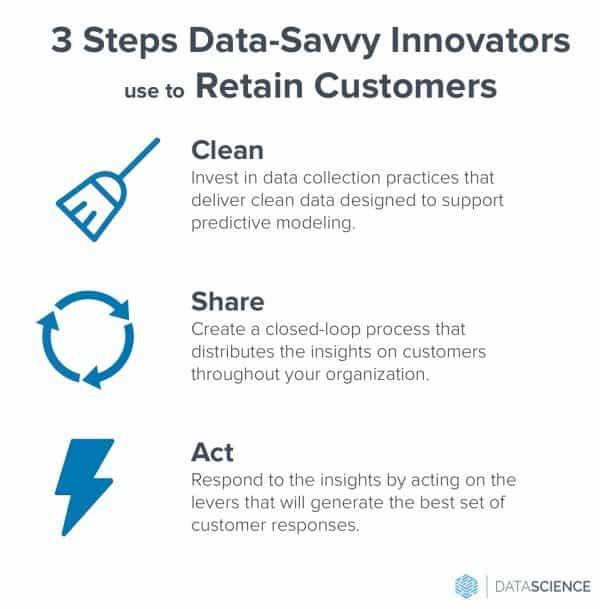Subscription box businesses are more popular than ever, with average site visits growing by 3,000% over the past three years and revenue skyrocketing (Loot Crate, a DataScience customer, was ranked No.1 on the Inc 5000 fastest growing companies list this year with a whopping 66,789% growth in revenue since 2013). These businesses seem to have little in common — they offer everything from razor blades to dog food to “mystery boxes” — but when it comes measuring success, they largely rely on one metric: retention rate.
Retention rate, in its simplest form, can be defined as the number of renewed customers divided by total number of renewable customers. I say “can be defined as” because retention rate can be calculated in a number of ways; this is just the most common.
Aside from the initial sales numbers, retention rate is arguably the most important metric to a subscription business. That’s because the bigger a company’s subscription base becomes, the more that company relies on its customer base for revenue. Shifts in retention rates can have a material financial impact. At best, a decreased retention rate simply results in lower revenue. But, when you consider factors such as unrealized returns on the marketing cost to acquire a new customer, low retention rates can become very expensive.
So in order to hedge against attrition, most companies today are creating predictive churn models to understand what causes customers to unsubscribe — and how those customers might be better retained. A churn model is simply a predictive algorithm that identifies the likeliness of a customer to churn. The type of algorithm used — regression and random forest are just two examples — will depend on the data available, as well as the company’s business model and product offering.
For many subscription companies, a retention model operates as the central nervous system from which other orders of operation derive. That said, if you want to create a retention machine, it’s not enough to simply create a churn model. You need to take some other important steps to optimize your retention efforts.
First, you need a lot of clean data.
You not only need a lot of data, you need clean data — data that is free of corrupt or inaccurate records. In the world of data science, there is a common expression: Garbage in, garbage out. Indeed, the better the datasets, the more a data scientist has to work with when building out the features of a predictive model. And when a data scientist has a lot to work with, the resulting model’s predictive abilities are increased.
But how can you ensure your datasets are clean and robust? Investing in proper data collection early is essential to having healthy retention rates down the line. Data engineers at successful organizations keep the end goal — predictive modeling — in mind when they structure a dataset, so that relevant information is recorded at the ideal frequency and granularity from the very beginning.
Second, you must create a closed-loop process.
In order to create a retention machine that hums at every point during a customer’s life cycle from initial interaction to marketing to customer service intervention campaigns, there needs to be company-wide harmonious approach to retention. Consequently, communication ought to flow up, down, left, and right — throughout the entire business — so that retention becomes a team sport.
Deploy your churn model so that everyone in your organization has access to the model’s outputs, and make sure they understand the features of churn and what leads to customer attrition. With some of DataScience’s customers, for example, we’ve worked to integrate customer churn ratings directly into customer service dashboards. With that capability, customer service agents on a call with a customer can look up that customer’s individual churn rating, and act accordingly. If that customer is high value and at risk of churn, he or she might be a good candidate for a discount offer or service upgrade.
Third, you must act on your findings.
It’s not enough to simply predict churn. Your organization must be ready to take action — gitty up! Once a churn model is deployed (and even while the model is being built), you can begin to identify the features that are linked to churn and decide how to use that information to your advantage. For example, if customers who receive a late delivery of their subscription box are five times as likely to churn as customers who receive on-time delivery, it might be a good idea to reduce the number of late deliveries by changing shipping providers. There are so many ways to mitigate churn: You can experiment with A/B tests, promotions, and general life-cycle management communications. And as the results roll in, you will build a foundation of knowledge about what approaches lead to statistically significant results.
Now that subscription business models are increasing in popularity, so too is predictive modeling for retention. That’s why companies leading the charge in retention are creating more robust models from data collected at every point in the customer life cycle. But more importantly, those companies are sharing the outputs of those models across every team so that the right actions are taken to retain more customers — from marketing campaigns to product development efforts.
Like this article? Subscribe to our weekly newsletter to never miss out!
Image: Josep Ma. Rosell







